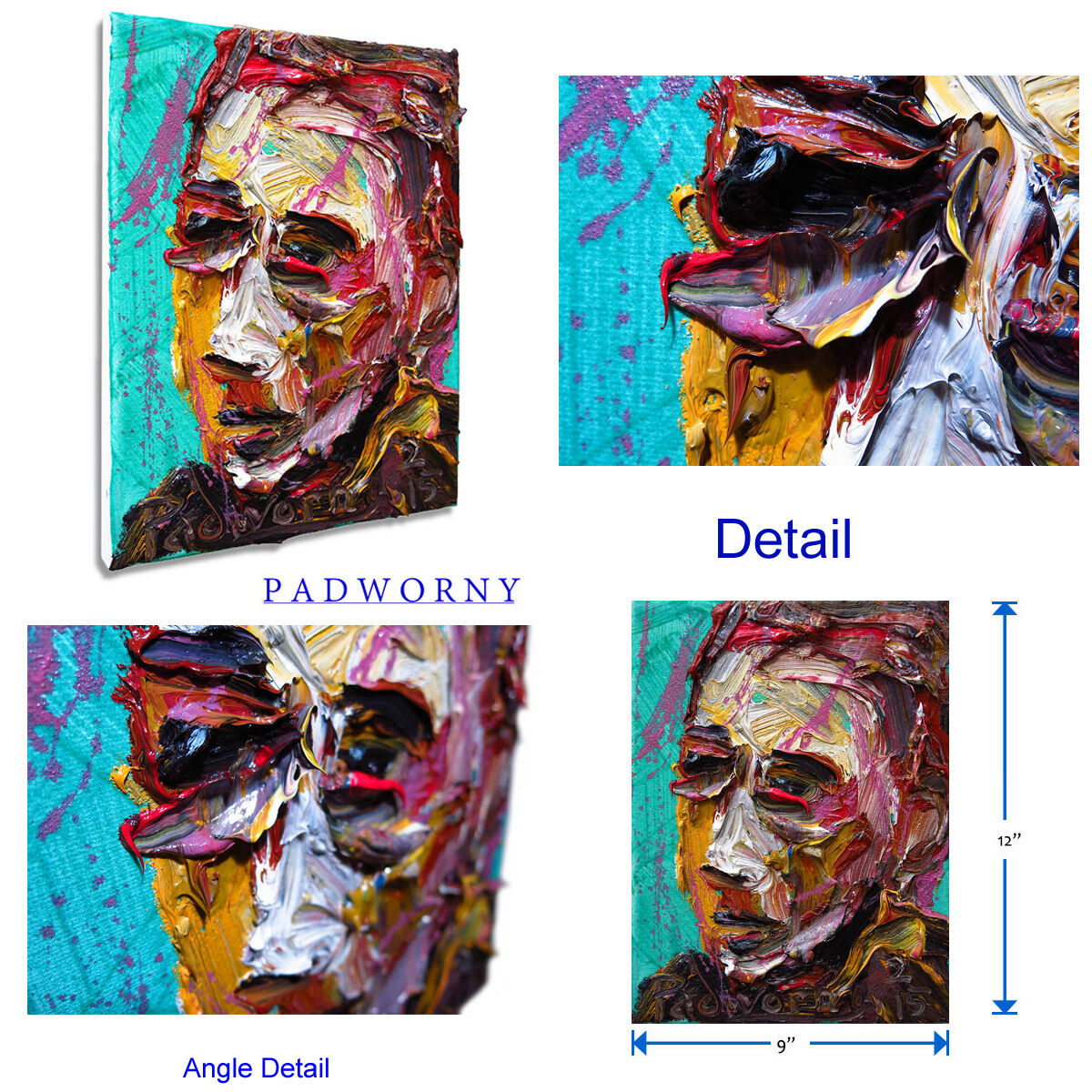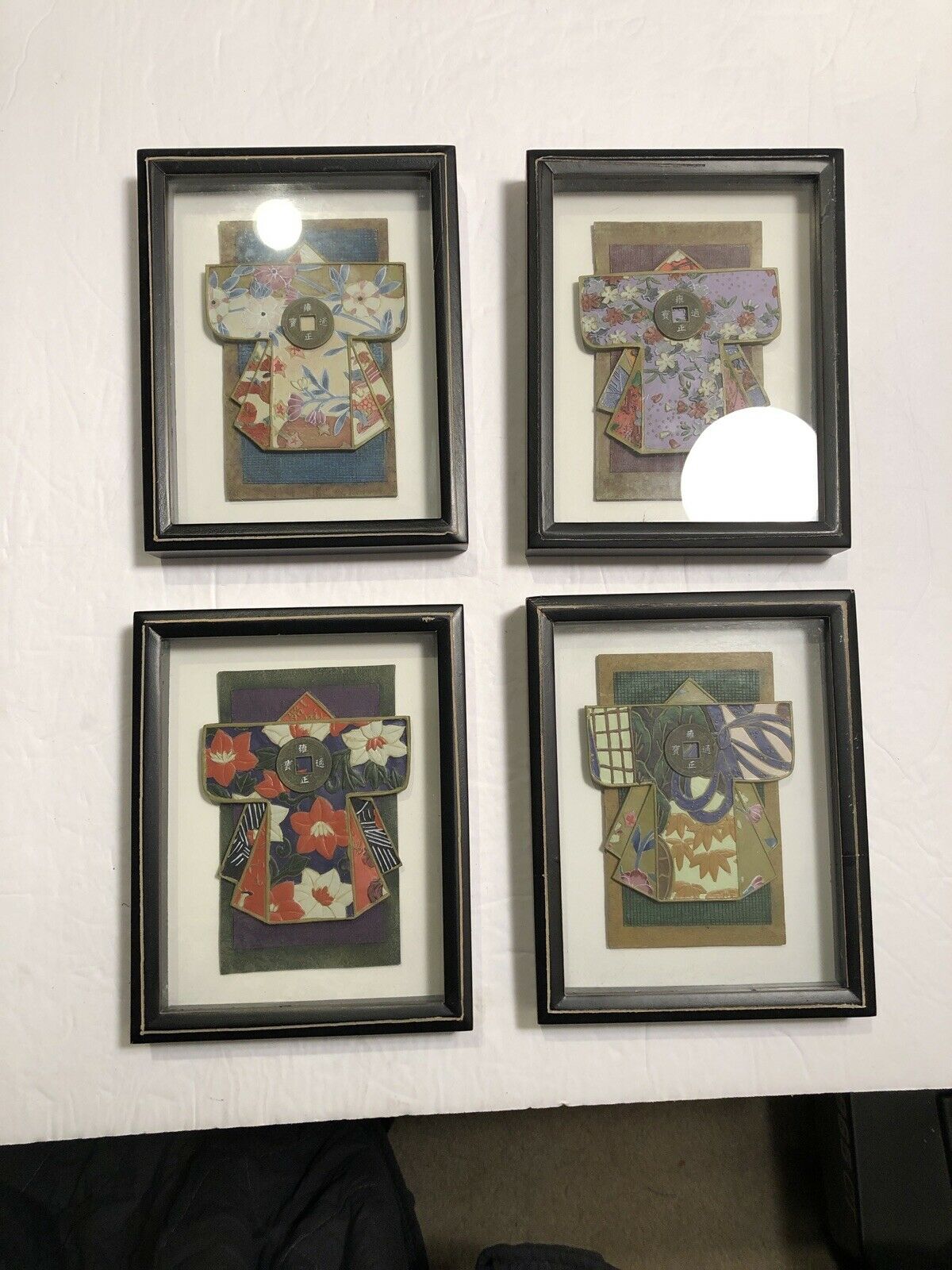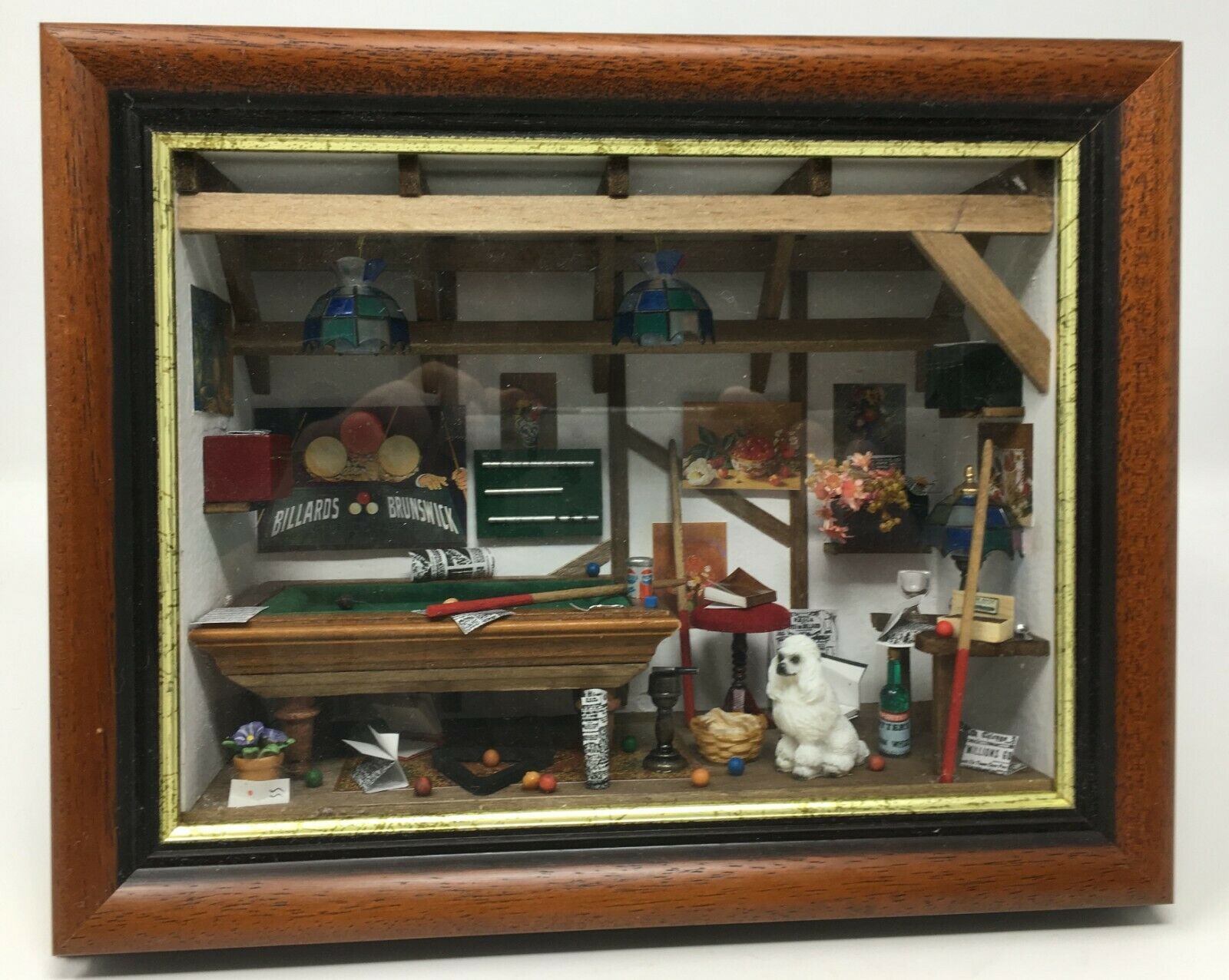-40%
Vintage BOOK COVER ART 1980S THE UNIVERSE PASACHOFF board artwork Sharon May
$ 369.6
- Description
- Size Guide
Description
A very rare original illustration artwork on board from 1980S by artist Sharon L. May for A BOOK COVER FOR THE BOOK THE UNIVERSE BY JAY M. PASACHOFF measuring overall approximately 13 X 30 inches. Multilayered art.Jay Myron Pasachoff
(born 1943) is an American
" title="Physics" style="text-decoration-line: none; color: rgb(11, 0, 128); background: none rgb(255, 255, 255); font-family: sans-serif; font-size: 14px;">physics
, mathematics, and other sciences.
Jay Myron Pasachoff (born 1943) is an American astronomer. Pasachoff is Field Memorial Professor of Astronomy at Williams College and the author of textbooks and tradebooks in astronomy, physics, mathematics, and other sciences.
Contents
1
Biography
2
Work
3
Selected publications
4
See also
5
References
6
External links
Biography
After the Bronx High School of Science, Pasachoff studied at Harvard, receiving his bachelor's degree in 1963, his master's degree in 1965, and his doctorate in 1969. His doctoral thesis was titled Fine Structure in the Solar Chromosphere.[1] He worked at the Harvard College Observatory and Caltech before going to Williams College in 1972. His sabbaticals and other leaves have been at the University of Hawaii’s Institute for Astronomy, the Institut d'Astrophysique de Paris, the Institute for Advanced Study in Princeton, New Jersey, the Harvard-Smithsonian Center for Astrophysics in Cambridge, Massachusetts, Caltech in Pasadena, California and most recently at the Carnegie Observatories, also in Pasadena. He has taken a leading role in the science and history of transits of Mercury and Venus, as an analogue to exoplanet studies, leading up to the transit of Venus, and the 2016 and 2019 transits of Mercury.[2] Jay Pasachoff on solar eclipses: "Each time is like going to the seventh game of the World Series with the score tied in the ninth inning."[3]
Work
Pasachoff observes with a wide variety of ground-based telescopes and spacecraft, and reports on those activities in writing his texts. Pasachoff has carried out extensive scientific work[4] at total solar eclipses, and has championed the continued contemporary scientific value of solar eclipse research.[5] His research has been sponsored by the National Science Foundation, NASA, and the National Geographic Society.[6] He is Chair of the Working Group on Eclipses of the International Astronomical Union of the Sun and Heliosphere Division and of the Education, Outreach, and Heritage Division. His solar work also includes studies of the solar chromosphere, backed by NASA grants, using NASA spacecraft and the 1-m Swedish Solar Telescope on La Palma, Canary Islands, Spain. With Richard Cohan and his sister, Nancy Pasachoff, Pasachoff wrote in 1970 an article for Nature discussing that the belief in the supernatural such as horoscopes impede the growth of science.[7] He has collaborated with a professor of art history, Roberta J. M. Olson of the New-York Historical Society, on astronomical images in the art of Renaissance Italy, Great Britain, the U.S. (eclipse oil paintings), and elsewhere.[8] Jay and Naomi Pasachoff wrote a review of Alexander Borodin’s solar-inspired opera for Nature produced by the New York Metropolitan Opera in 2014.[9] Also with his wife, Naomi, Pasachoff wrote biographies of Henry Norris Russell,[10] John Pond,[11] Hypatia,[12] and Edward Williams Morley[13] for the Biographical Encyclopedia of Astronomers. Their books and other publications are listed at as links to publishers’ .
Pasachoff received the 2003 Education Prize of the American Astronomical Society, "For his eloquent and informative writing of textbooks from junior high through college, For his devotion to teaching generations of students, For sharing with the world the joys of observing eclipses, For his many popular books and articles on astronomy, For his intense advocacy on behalf of science education in various forums, For his willingness to go into educational nooks where no astronomer has gone before, the AAS Education Prize is awarded to Jay M. Pasachoff."[14] Asteroid 5100 Pasachoff recognizes Pasachoff's astronomical accomplishments. In addition to his college astronomy texts, Pasachoff has written Peterson Field Guide to the Stars and Planets,[6] and is author or coauthor of textbooks in calculus and in physics, as well as several junior-high-school textbooks.[6] Pasachoff received the 2012 Prix-Jules–Janssen from the Société astronomique de France,[15]"for your outstanding research, teaching and popularisation of Astronomy, in the spirit with which Camille Flammarion created the award back in 1897."[16] He received the 2017 Richtmyer Memorial Award from the American Association of Physics Teachers "for outstanding contributions to physics and effectively communicating those contributions to physics educators."[17] He received the 2019 Klumpke-Roberts Award of the Astronomical Society of the Pacific "for his contributions to the public understanding and appreciation of astronomy", based in part on his role at the times of solar eclipses, when "Jay becomes astronomy's cheerleader-in-chief, allowing more and more people to become interested and engaged in the field."
Pasachoff collaborated with scientists from Williams College and MIT to observe the atmospheres of outer planets and their moons, including Pluto, its moon Charon, Neptune’s moon Triton, and other objects in the outer solar system. He has also using radio astronomy made observations of the interstellar medium, concentrating on deuterium.[18]
Pasachoff has been active in educational and curriculum matters. He was U.S. National Liaison to and was President (2003–2006) Commission on Education and Development, which is now Commission C1 on Astronomy Education and Development of Division C on Education, Outreach, and Heritage, of the International Astronomical Union.[1] He has twice been Chair of the Astronomy Division of the American Association for the Advancement of Science, and has been on the astronomy committees of the American Astronomical Society (and its representative 2004–2013 to the AAAS), the American Physical Society, and the American Association of Physics Teachers. He was on the Council of Advisors of the Astronomy Education Review. He has spearheaded a discussion of what should be taught in astronomy courses, championing the position of including and emphasizing contemporary astronomy.[19] He is a Fellow of the American Physical Society, the International Planetarium Society, the American Association for the Advancement of Science, Committee for Skeptical Inquiry, and the Royal Astronomical Society, and he has held a Getty Fellowship.[20] He has lectured widely, including a stint as a Sigma Xi Distinguished Lecturer. He is also Director of the Hopkins Observatory and (in rotation, most recently beginning in the fall semester of 2019) Chair of the Astronomy Department at Williams.
Pasachoff has been Chair of the Historical Astronomy Division of the American Astronomical Society (2013-2015). He is on the Organizing Committee for Commission C.C3 on the History of Astronomy of the International Astronomical Union (2015-2018) and on the Johannes Kepler Working Group. A catalogue of the Jay and Naomi Pasachoff rare-book collection—including works by Copernicus, Tycho, Galileo, Kepler, Newton, Fraunhofer, and Einstein—on deposit in the Chapin Library of Williams College (W. Hammond, 2014).[21]
Selected publications
The Sun, co-authored with Leon Golub (Reaktion Books, London, for the Science Museum, London, 2017)
Cosmos: The Art and Science of the Universe, co-authored with Roberta J. M. Olson (Reaktion Books, London, and U. Chicago Books, London, 2019) I5
Peterson Field Guide to the Stars and Planets, 4th ed. 2019 update (Houghton Mifflin Harcourt, 2016) I
The Cosmos: Astronomy in the New Millennium, co-authored with Alexei V. Filippenko (5th edition, Cambridge University Press, 2019),
The Solar Corona, 2nd Edition, co-authored with Leon Golub (Cambridge University Press, 2010) 978-0-521-88201-9
Innovation in Astronomy Education, co-edited with Rosa M. Ros and Naomi Pasachoff (Cambridge University Press, 2008)
Peterson First Guide to Astronomy, 2nd ed. (Houghton Mifflin Harcourt, 2013)
Teaching and Learning of Astronomy: Effective Strategies for Educators Worldwide, co-edited with John Percy (Cambridge University Press, 2005) 0
The Complete Idiot's Guide to the Sun (Alpha Books, 2003)74-7
Nearest Star: The Exciting Science of Our Sun, co-authored with Leon Golub (Harvard University Press, 2001) , 2nd edition, 2014,Cambridge University Press
The Teaching of Astronomy, co-edited with John Percy (Cambridge University Press; Reprint edition, 1992)
Fire in the Sky: Comets and Meteors, the Decisive Centuries, in British Art and Science, co-authored with Roberta J. M. Olson, both beneficiaries of Getty Fellowships, (Cambridge University Press, 1998) I
Earth Science, co-authored with Naomi Pasachoff and Tim Cooney (Scott Foresman, 1990) IX
Physical Science, co-authored with Naomi Pasachoff and Tim Cooney (Scott Foresman, 1990)
See also
Asteroid 5100 Pasachoff
Asteroid 68109 Naomipasachoff
Richard Wolfson (physicist), co-author of a physics textbook with Pasachoff
Education
Bronx High School of Science H.S. 1959
Harvard College A.B. 1963
Harvard University A.M. 1965
Harvard University Ph.D. 1969
Harvard College Observatory postdoc 1969-70
Caltech postdoc 1970-72
2003 Education Prize, American Astronomical Society
2003 Honorary Member, Royal Astronomical Society of Canada
2003-2006 President, Commission on Education and Development of the International Astronomical Union current Chair, Working Group on Solar Eclipses
2012 Janssen Medal, Société Astronomique de France
2013-15 Chair, Historical Astronomy Division, American Astronomical Society; 2013-15, Chair; 2015-17 Past Chair
2017 Richmyer Memorial Lecture Award, American Association of Physics Teachers
2019 Klumpke-Roberts Award from the Astronomical Society of the Pacific
2020 Legacy Fellow of the American Astronomical Society
Sabbatical and Other Leaves
Institute for Astronomy, University of Hawaii 1980-81, 1984-85
Institut d’Astrophysique, Paris 1988
Institute for Advanced Study, Princeton 1989-90
Harvard-Smithsonian Center for Astrophysics 1993-4
Harvard University Visiting Lecturer in Astronomy 1993-4
Smithsonian Astrophysical Observatory Visiting Scientist 1993-4
Harvard University: Associate of the Astronomy Dept. Smithsonian Astrophysical Observatory: Visiting Scientist 2001-2
California Institute of Technology 2008-9, Fall 2012, Spring 2016
Carnegie Observatories, Pasadena Spring 2019
Visiting Scientist Appointments, Not in Residence
California Institute of Technology 2010-2011
California Institute of Technology Auxiliary Appointment, Visitor Fall 2012-2013, 2014-17
Smithsonian Astrophysical Observatory 2009-2012
Officer and Committee Member:
President, Commission 46 (Astronomy Education and Development) of the International Astronomical Union (2003-2006); Retiring President (2003-2006); U.S. National Liaison to the Commission and its predecessor, The Teaching of Astronomy, (197-)
Chair, Working Group on Solar Eclipses of the International Astronomical Union, Division C Education, Outreach and Heritage and Division E Sun and Heliosphere
Member, Johannes Kepler Working Group, IAU Commission 41 (now C.C3) on the History of Astronomy
Member, IAU Division C Commission C1 (C.C1) Working Group, Theory and Methods in Astronomy Education
Member, IAU Division C Commission C1 (C.C1) Working Group, Network for Astronomy School Education
Past Chair, Historical Astronomy Division of the American Astronomical Society (2015-17); Chair (2013-2015)
Organizing Committee, International Astronomical Union C.C3 on the History of Astronomy (2015-2018)
IAU Working Group on Star Names (2016–), Division C Education, Outreach and Heritage
Former Chair, Historical Astronomy Division of the American Astronomical Society (2013-15)
Executive Committee Working Group (EC-WG) of the IAU; Public Naming of Planets and Planetary Satellites (2016-); IAU Working Group on Star Names (2016-)
ay Pasachoff, Field Memorial Professor of Astronomy at Williams College in Williamstown, Massachusetts, USA, is a prominent solar-eclipse observer, having seen 69 solar eclipses (and 34 totalities) through 2017. He is Chair of the Working Group on Solar Eclipses of the International Astronomical Union. He has benefitted from research grants from the Committee for Research and Exploration for several research projects, including studies of solar eclipses and transits of Venus, as well studies of Neptune's moon Triton, Halley's Comet, a volcano, and the cosmological consequences of interstellar deuterium.
Pasachoff was educated in New York City, at PS 114, JHS 22, and the Bronx High School of Science, and then got his A.B., A.M., and Ph.D. at Harvard. After a Harvard College Observatory postdoc to study the 1970 total solar eclipse from Mexico, he spent two years as a postdoc at Caltech, where he carried out observations of the Sun from the Big Bear Solar Observatory and of interstellar deuterium from the Owens Valley Radio Observatory, also with an appointment as research fellow at the Mt. Wilson and Palomar Observatories that he used to make spectral observations from the 100" and 200" telescopes.
Pasachoff came to Williams College in 1972, where he director of the Hopkins Observatory, the nation's oldest extant astronomical observatory. He has received the Education Prize of the American Astronomical Society, the Janssen Prize of the Société Astronomique de France, and the Richtmyer Memorial Lecture Award of the American Association of Physics Teachers.
He is the author or coauthor of about 30 books, including the 17th version of an astronomy survey textbook now known as The Cosmos: Astronomy in the New Millennium. He has taken over from his mentor, Prof. Donald H. Menzel, as author of the Peterson Field Guide to the Stars and Planets, for which the 2018 printing includes updated information on NASA's flyby of Pluto and on the 2017 total solar eclipse observations. His most recent books, both by Leon Golub and himself, are Nearest Star: The Surprising Science of Our Sun and The Sun . A joint book with art-historian Roberta Olson, Cosmos: The Art and Science of Astronomy, will be published in 2019.














